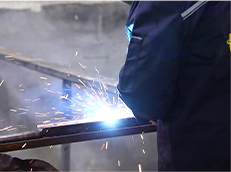Innovative Automatic Layer Chicken Cage System for Enhanced Poultry Farming Efficiency
Dec . 10, 2024 22:28 Back to list
Innovative Automatic Layer Chicken Cage System for Enhanced Poultry Farming Efficiency
The Benefits of Automatic Layer Chicken Cages
In recent years, the poultry industry has significantly evolved, with technology playing a crucial role in enhancing productivity and animal welfare. One of the prominent technologies making waves in the industry is the automatic layer chicken cage system. This innovation is designed to efficiently house laying hens, maximizing egg production while minimizing the labor and management challenges associated with traditional farming methods.
Automatic layer chicken cages are sophisticated systems that allow poultry farmers to manage their flocks with greater ease and efficiency. These caged systems are designed to stack hens vertically, utilizing space effectively and enabling the use of mechanized processes to handle feeding, egg collection, and waste removal. This vertical stacking not only conserves physical space on the farm but also leads to higher production rates, as each cage can house several hens without the need for extensive ground area.
One of the primary benefits of using automatic layer chicken cages is the improvement in hygiene and biosecurity. The design of these cages typically includes features that minimize the contact of hens with feces and other potential contaminants. Automatic manure disposal systems expel waste from the cages regularly, reducing the risk of disease outbreaks. When hens are kept in cleaner environments, they are less likely to suffer from health issues, leading to better overall productivity.
Moreover, these systems often incorporate advanced feeding mechanisms, allowing for precise control over the hens' diets. Automated feeding systems can provide the right amount of feed at optimal intervals, ensuring that the hens receive balanced nutrition consistently. This level of precision can lead to increased egg production as well as improved egg quality, which is vital for markets demanding high standards.
automatic layer chicken cage

Another advantage of automatic layer chicken cages is the significant reduction in labor requirements. Traditional poultry farming often necessitates extensive manual work, from feeding to cleaning and egg collection. With automation, many of these tasks can be performed with minimal human intervention. This not only saves time but also allows farmers to allocate their workforce more efficiently, focusing on other critical areas such as health monitoring and flock management.
Additionally, these systems enhance the well-being of the hens. Automatic layer chicken cages provide controlled environments where factors such as temperature, light, and ventilation can be regulated. This controlled setting helps reduce stress among the birds, which is important for their health and egg-laying consistency. Stress-free hens have been shown to produce more eggs and better quality eggs.
Finally, the economic implications of investing in automatic layer chicken cages cannot be overlooked. While the initial setup costs may be higher than traditional systems, the long-term benefits often outweigh these costs. Increased production rates, reduced labor costs, and lower mortality rates contribute to a quicker return on investment. Furthermore, as sustainability becomes increasingly important, many of these systems also incorporate features that reduce resource usage, such as water and feed.
In conclusion, automatic layer chicken cages represent a significant advancement in poultry farming, providing numerous benefits that enhance productivity, improve hygiene and biosecurity, reduce labor needs, and promote animal welfare. As the industry continues to evolve, embracing such innovations will be crucial for farmers looking to thrive in a competitive market while ensuring the sustainable and ethical treatment of livestock. With the right technology, the future of poultry farming looks promising, paving the way for a more efficient and responsible approach to egg production.
-
Hot Sale 24 & 18 Door Rabbit Cages - Premium Breeding Solutions
NewsJul.25,2025
-
Automatic Feeding Line System Pan Feeder Nipple Drinker - Anping County Yize Metal Products Co., Ltd.
NewsJul.21,2025
-
Automatic Feeding Line System Pan Feeder Nipple Drinker - Anping County Yize Metal Products Co., Ltd.
NewsJul.21,2025
-
Automatic Feeding Line System - Anping Yize | Precision & Nipple
NewsJul.21,2025
-
Automatic Feeding Line System - Anping Yize | Precision & Nipple
NewsJul.21,2025
-
Automatic Feeding Line System-Anping County Yize Metal Products Co., Ltd.|Efficient Feed Distribution&Customized Animal Farming Solutions
NewsJul.21,2025






